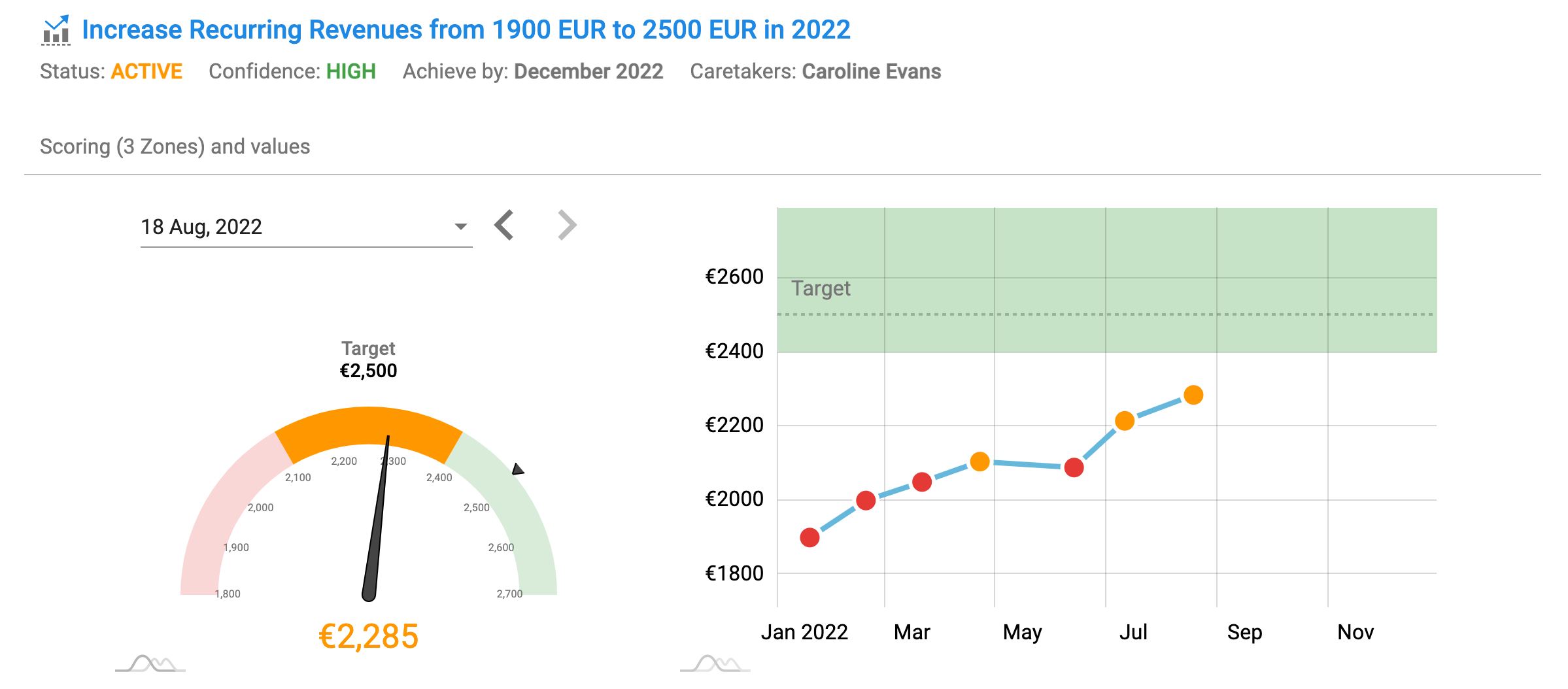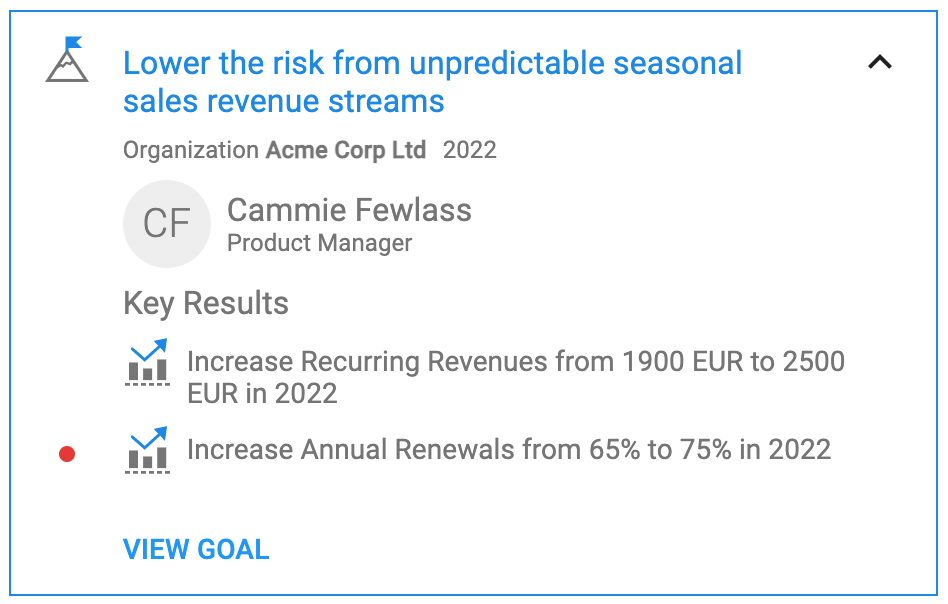Scoring, or grading, is probably one of the most challenging and confusing parts of the OKR framework.
Current most known scoring techniques
Current techniques, like only binary scoring (0/1, True/False) or Google's (0, 0.3, 0.7, and 1.0) can be too simple or too subjective and often illogical.
More often than not, without an upfront agreement, the event at the end of the OKR cycle can be messy and harm the OKR adoption process.
The Agile Tools approach to scoring
Upfront agreement
The major difference to existing software solutions and "analog practices" in general, is that you must agree on scores upfront - at the time of drafting the Key Result.
The three current ways of creating a Key Result in Agile Tools use a wizard. Before selecting which scoring you want to use, choose the type of Key Result. Based on that selection, the appropriate scoring types are available in one of the subsequent steps.
Go through the How-to Guides for a more in-depth explanation.
Two common - but many other types of intuitive scoring
Depending on the Key Result type, different scoring types are available.
The most common two scoring types are "2 Zones Yes/No" (more known as "Binary"), and "3 Zones", often called RAG (Red Amber Green).
 |
 |
Key Results scoring and monitoring
Scoring is only applied for Key Results, not the whole OKR, by design. No meaningful value is added if scoring would be averaged to the Objective containing those Key Results. OKRs are not as KPI dashboards.

In the image above you can see an example of the "3 Zones" scoring. You can observe the trend for Recurring Revenues during the period of this Key Result.
Predictive scoring
We offer a predictive indicator to minimize unpleasant surprises late in the cycle. When you create a Key Result, it is only natural that your confidence is high. During the recurring check-ins, when you debate the progress, it is possible to mark the confidence level to be different, less optimistic.
Using predictive indicators is a great technique to focus your efforts, change expectations, or even abandon the attempt to complete the Key Result.
The red dot in front of "Increase Annual Renewals..." Key Result indicates that we are not confident to reach the set target (75%).
